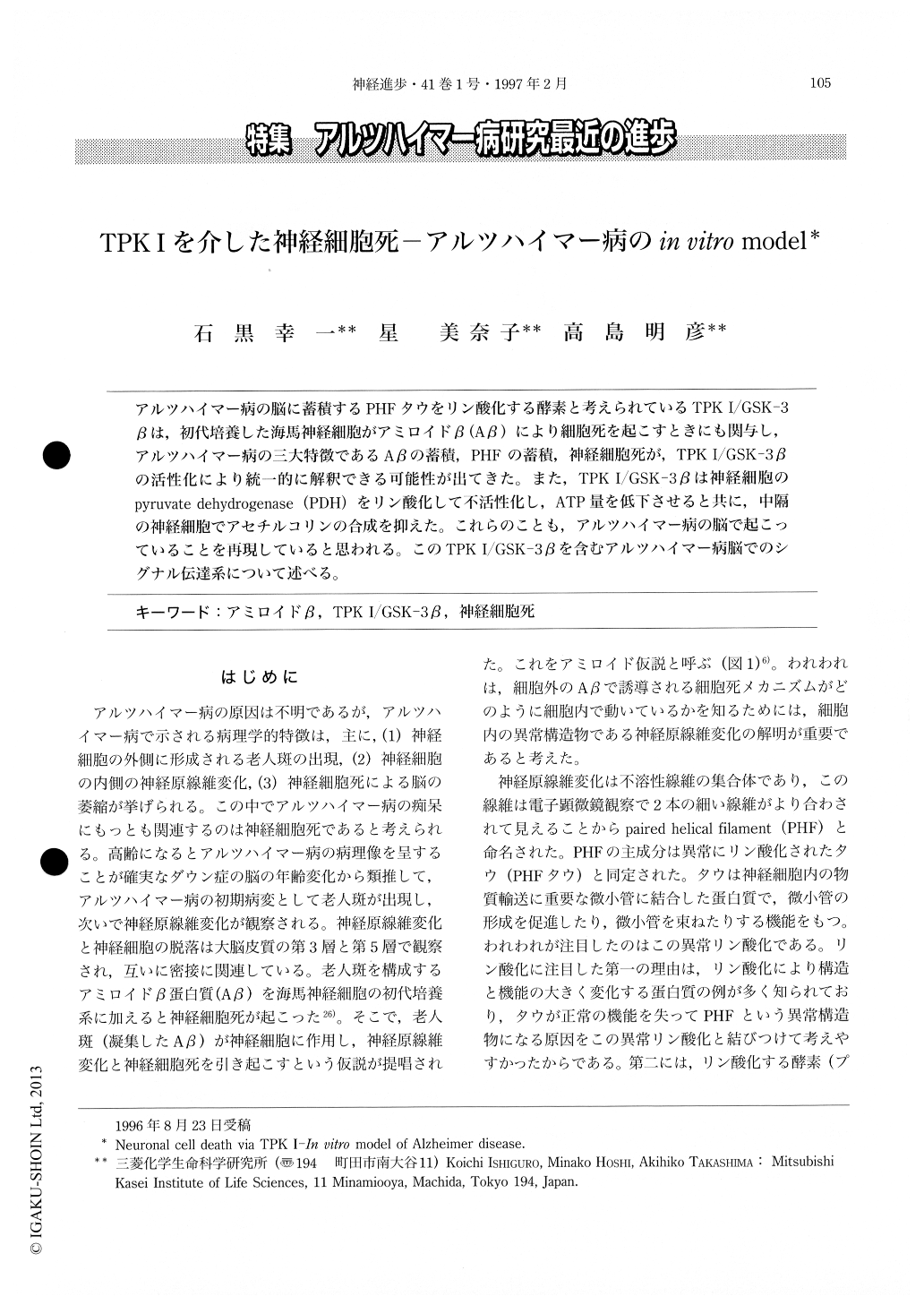Japanese
English
- 有料閲覧
- Abstract 文献概要
- 1ページ目 Look Inside
アルツハイマー病の脳に蓄積するPHFタウをリン酸化する酵素と考えられているTPK I/GSK-3βは,初代培養した海馬神経細胞がアミロイドβ(Aβ)により細胞死を起こすときにも関与し,アルツハイマー病の三大特徴であるAβの蓄積,PHFの蓄積,神経細胞死が,TPK I/GSK-3βの活性化により統一的に解釈できる可能性が出てきた。また,TPK I/GSK3βは神経細胞のpyruvate dehydrogenase(PDH)をリン酸化して不活性化し,ATP量を低下させると共に,中隔の神経細胞でアセチルコリンの合成を抑えた。これらのことも,アルツハイマー病の脳で起こっていることを再現していると思われる。このTPK I/GSK-3βを含むアルツハイマー病脳でのシグナル伝達系について述べる。
Histopathological features of Alzheimer's disease (AD) include extracellular deposits of amyloid β (Aβ) fibril in the cores of senile plaques, intracellular neurofibrillary tangles (NFT) which are composed of paired helical filaments (PHF), and neuronal cell loss. The main component of PHF is highly phosphorylated tau protein. We identified a protein kinase converting normal tau into PHF-like state. The kinase is tau protein kinase (TPK) I/glycogen synthase kinase (GSK)-3β. Using neuronal cell culture system as AD model, it has beeen realized that TPK I/GSK-3β plays a central role in AD pathology.

Copyright © 1997, Igaku-Shoin Ltd. All rights reserved.


